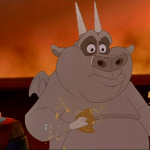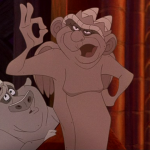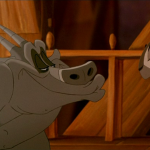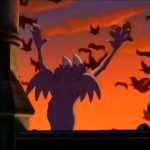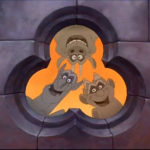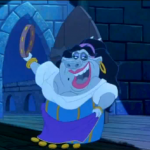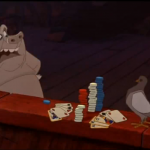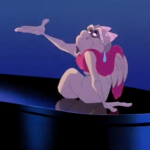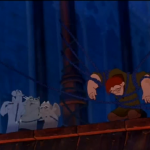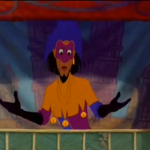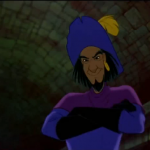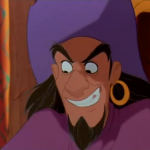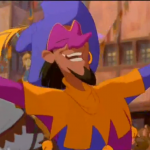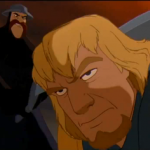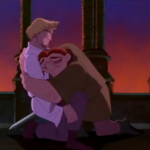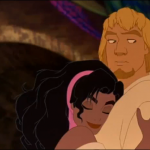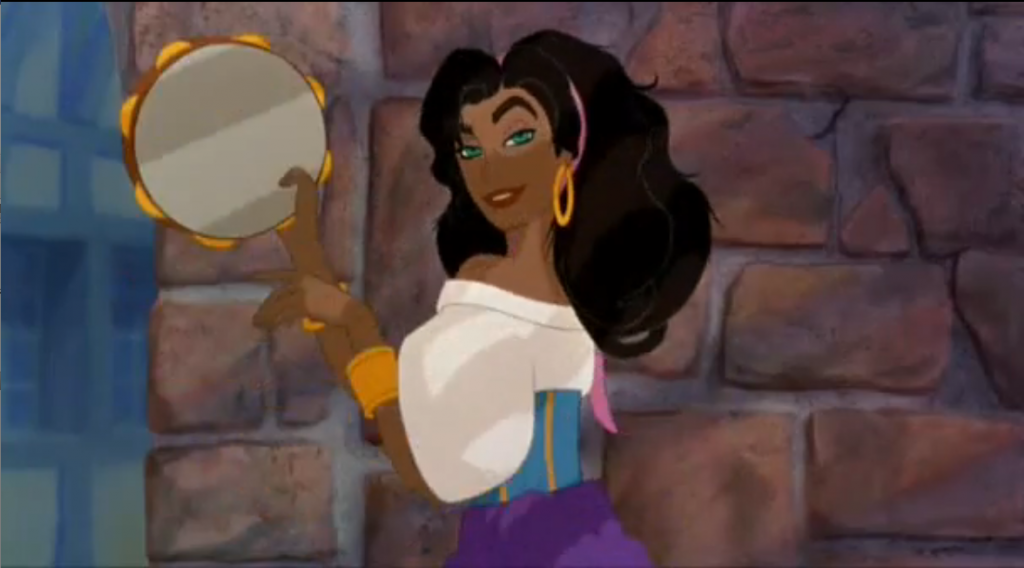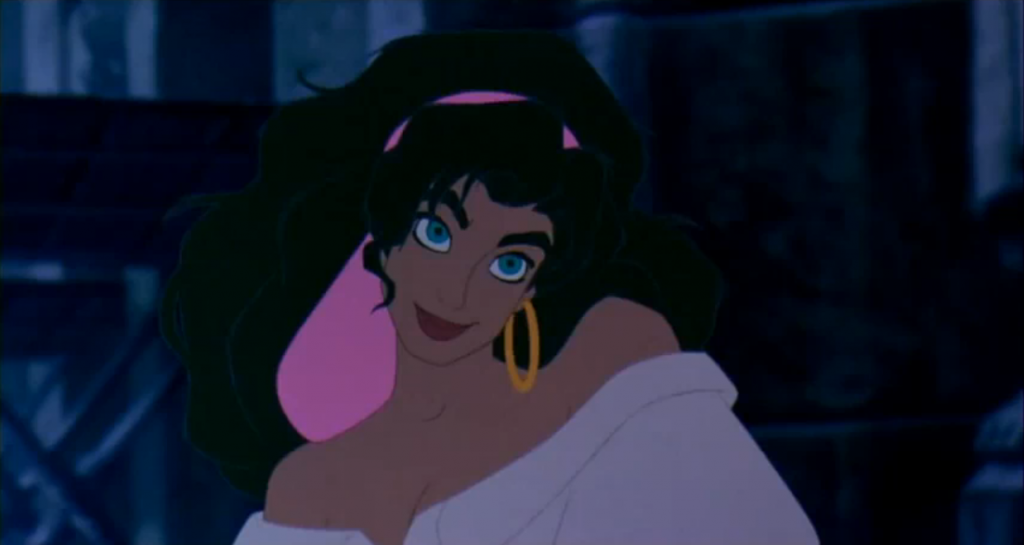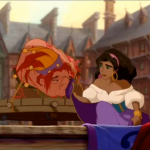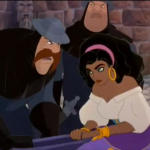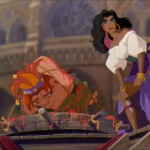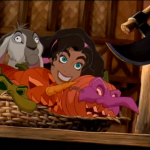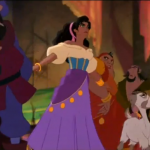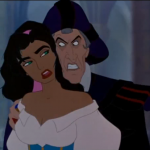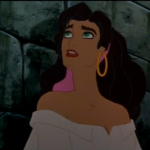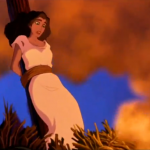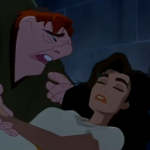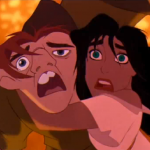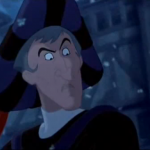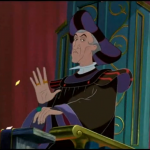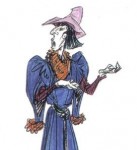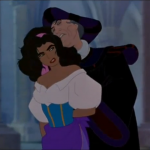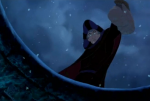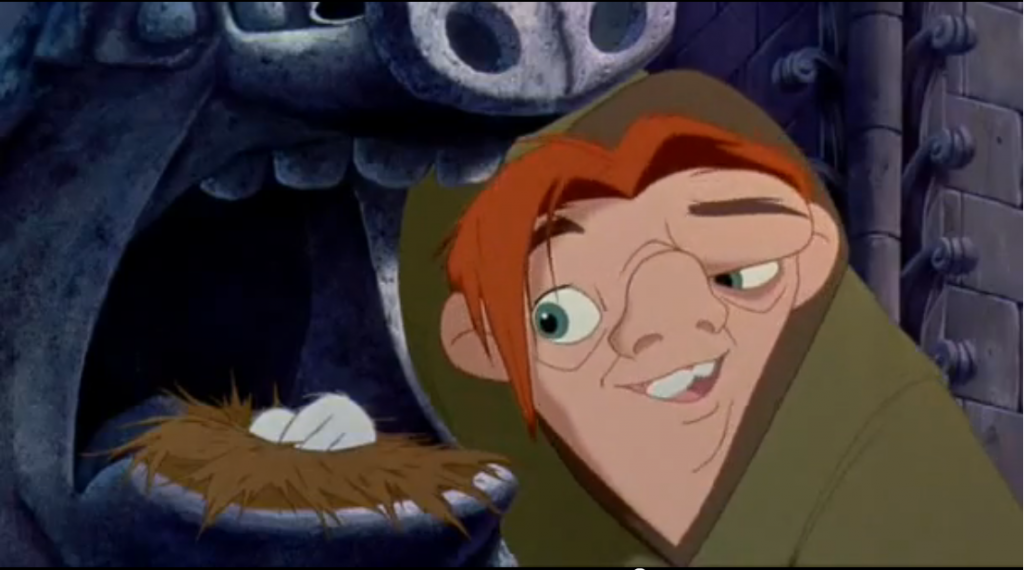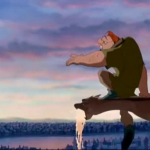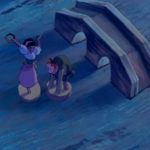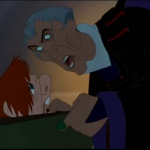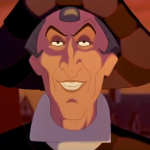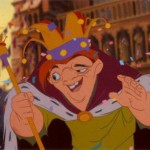The Gargoyles – Victor, Hugo and Laverne.
The Gargoyles are the most annoying characters in this movie. They’re the comic relief but they fail at it (ok there are some funny bits but they’re few and very far between).
Hugo (voiced by Jason Alexander), the short piggish one, is a load mouth and the most annoying. He also has a thing for Djali.
Victor (voiced Charles Kimbrough) is the tall prissy serious one. He is the least interesting.
Laverne (voiced by Mary Wickes/ Jame Withers) is the old one who tells it like is. She is probably the most of tolerable of the gargoyles.
Victor and Hugo were named for Victor Hugo the author, the writers thought they were being clever and they really wanted to prove they had read the book. Laverne was named after Laverne Andrews, one of The Andrew Sisters. They each have their own personalities and at least they balance each other out.
The Theory goes that the Gargoyles are aspects of Quasimodo’s imagination because he is a forced shut-in who is desperate to be love. However the Director people who thought they were being all smart and junk by trying to deep and profound, forgot (actually they didn’t forget they’re just inconsistent) that Djali interacted with Hugo and they fought to defend Notre Dame. Quasimodo’s main squeeze also saw the Gargoyles in the Sequel {shudders at the thought of the sequel shudders}. So let’s say that the directors are right and their theory that the Gargoyles are imaginary holds water; does this mean Quasimodo imagines Djali seeing Hugo? Does his means when Quasimodo is crowned King of Fools he imagines the Gargoyles cheering him on? Does he imagines the Gargoyles the throwing stuff off off Notre Dame and the soldiers getting hurt especially when Quasimodo is occupied? Does this mean that Quasimodo is the source the pop culture anachronisms? And if the Gargoyles are Quasimodo’s imagination does this mean that after Quasimodo made some real life friends and was accepted by the people the Gargoyles would cease to be? Because they’re still around in the {shudders} sequel {shudders}. If Quasimodo lives in his head this much does this mean Quasimodo in the book is more functional? Plus he must be contently winded from lugging three stone statues around the place, then again made that’s why he can lift up Phoebus in full armor one handed. Personally I think that the Gargoyles are Pan’s Labyrinthesque beings; only those who are innocent and pure can see them, hence why Quasimodo and Djali can see them but they can some effect on the actual world. Though in the German Musical, Der Glockner van Notre Dame, they are imaginary (and they have different names).
So why are the sidekicks Gargoyles in the first place? Well the oh so smartie directors said in the commentary that Quasimodo speaks to the Gargoyles in the book. They also claim that Quasimodo has long conversations (plural) with the Gargoyles. Looking over the book, I found that he was fond of a ‘grotesque personages sculptured on the wall’, and to this he says “why wasn’t I made of stone like you” (book 9 chapter 4 Earthenware and Crystal). I’m not sure what version of the novel they read where Quasimodo had long conversations with Gargoyles (1939 version? In the 1939 version Quasimodo utters this line to a gargoyle). If they were going to base a sidekick character off of objects that Quasimodo had a relationship with, it should have been the bells. They could’ve a sassy bell named Patti (Patti the Bell (Patti LaBelle) bad joke) that would have much better than the Gargoyles.
So what do the Gargoyles do in the film? They’re Quasimodo’s friends and guardians. They make [try] funny quips. They also make pop culture references. Disney has a habit of doing this. They started with the Genie in Aladdin. With the Genie it makes a level of sense because Genies are a supernatural beings, but in Hunchback this doesn’t work as well. The Gargoyles are part of Notre Dame, so how can they have inferences to the future? I don’t care that they magically – they’re part of an ancient building, they should be funny without making stupid references, Djali doesn’t resort it. Plus if they’re in fact imaginary, this means Quasimodo is the one doing it, so it makes even less sense. The only thing that the Gargoyles do well is they get Quasimodo off his ass and encourage him. But they also build Quasimodo’s expectations up too high. They convince him that Esmeralda is in love with him, which leads to some of Quasimodo’s emoness when she doesn’t reciprocate.
So the point of the Gargoyles is to provide levity but they just distract from the movie. Disney boasts the Hunchback as being their darkest movie but the Gargoyles hinder it. Plus the movie has some good levity already, Phoebus, Esmeralda, Clopin, Djali, Achilles, those stupid bumbling guards, the old heretic, the torturer guy etc, they all provide good comedy while keeping the flow of the movie and without making references. Disney really could have done better in the sidekick department for Quasimodo.
Speaking of Sidekicks next time – Achilles and Djali


